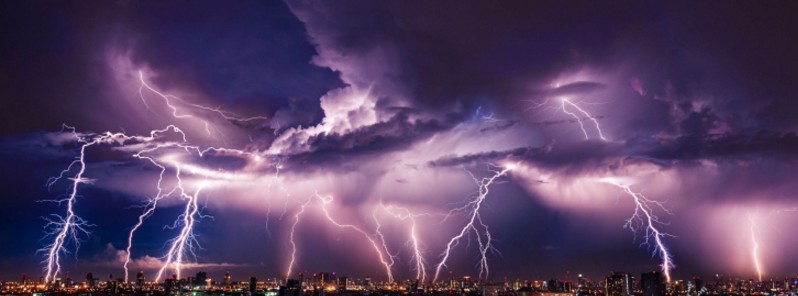Surge of lightning deaths in Bangladesh, 261 so far this year

South Asian country of Bangladesh is experiencing a surge of lightning deaths this year. As of June 22, 2016, 261 people have died from lightning, placing the country on track to beat last year’s 265 deaths. A similar surge is reported in the neighboring India, where at least 93 people were killed by lightning on June 21 and 22 alone.
The increasing number of lightning strikes has forced the government of Bangladesh to add lightning strikes to the country’s list of official types of disasters, which includes floods, cyclones and storm surges, earthquakes, drought and riverbank erosion, among others.
As a result, the government now compensates lightning strike victims or their families with sums between 7 500 and 25 000 taka ($95 to $310). Through mid-May the government had paid 1.5 million taka ($18 400) in claims this year to families of 81 people who died because of lightning, the Thomson Reuters Foundation reports.
“The months of April, May, and June are the hottest in Bangladesh and the moist air quickly rises upward to meet with dry north-westerly winds to cool and form large storm clouds,” Dipen Bhattacharya, a physics and astronomy professor at Moreno Valley College in California, told the Foundation.
Between May 12 and 14, 67 people died from lightning strikes in Bangladesh. Altogether, 132 people died in May after being hit by lightning, according to the Foundation for Disaster Forum, a Dhaka-based disaster preparedness network.
According to the Bangladesh Meteorological Department, 1 476 people have died from lightning in Bangladesh since 2010. Prior to 1981, the country saw lightning strikes on average nine days each May. Since that time, the country has seen strikes an average of 12 days each May.
Experts in Bangladesh and internationally say the rise in fatal lightning strikes may be related to climate change (warmer conditions causing more water evaporation from the land and ocean, increasing clouds and rainfall and the potential for lightning storms), but also to the country’s population growth and to deforestation, which has led to the disappearance of many tall trees that earlier would have drawn lightning strikes.
Now fatalities often involve farmers using metal farm equipment in open fields, or people standing near metal cell phone towers or electrical power towers, experts said.
The key to preventing lightning deaths is in education
"The US, for example, which once saw 200 to 300 lightning deaths a year, had managed to dramatically reduce that toll by making people aware of the risks of standing in open areas during thunderstorms," said A.Q.M. Mahbub, an earth and environmental science professor at the University of Dhaka.
"In Bangladesh, the same as anywhere where storms threaten, people should take shelter immediately in any (building) and farmers should flatten themselves to the soil when they meet any possibility of a thunderstorm to avoid incidents,” he said.
Source: Thomson Reuters Foundation
Featured image credit: Shutterstock

Commenting rules and guidelines
We value the thoughts and opinions of our readers and welcome healthy discussions on our website. In order to maintain a respectful and positive community, we ask that all commenters follow these rules:
We reserve the right to remove any comments that violate these rules. By commenting on our website, you agree to abide by these guidelines. Thank you for helping to create a positive and welcoming environment for all.